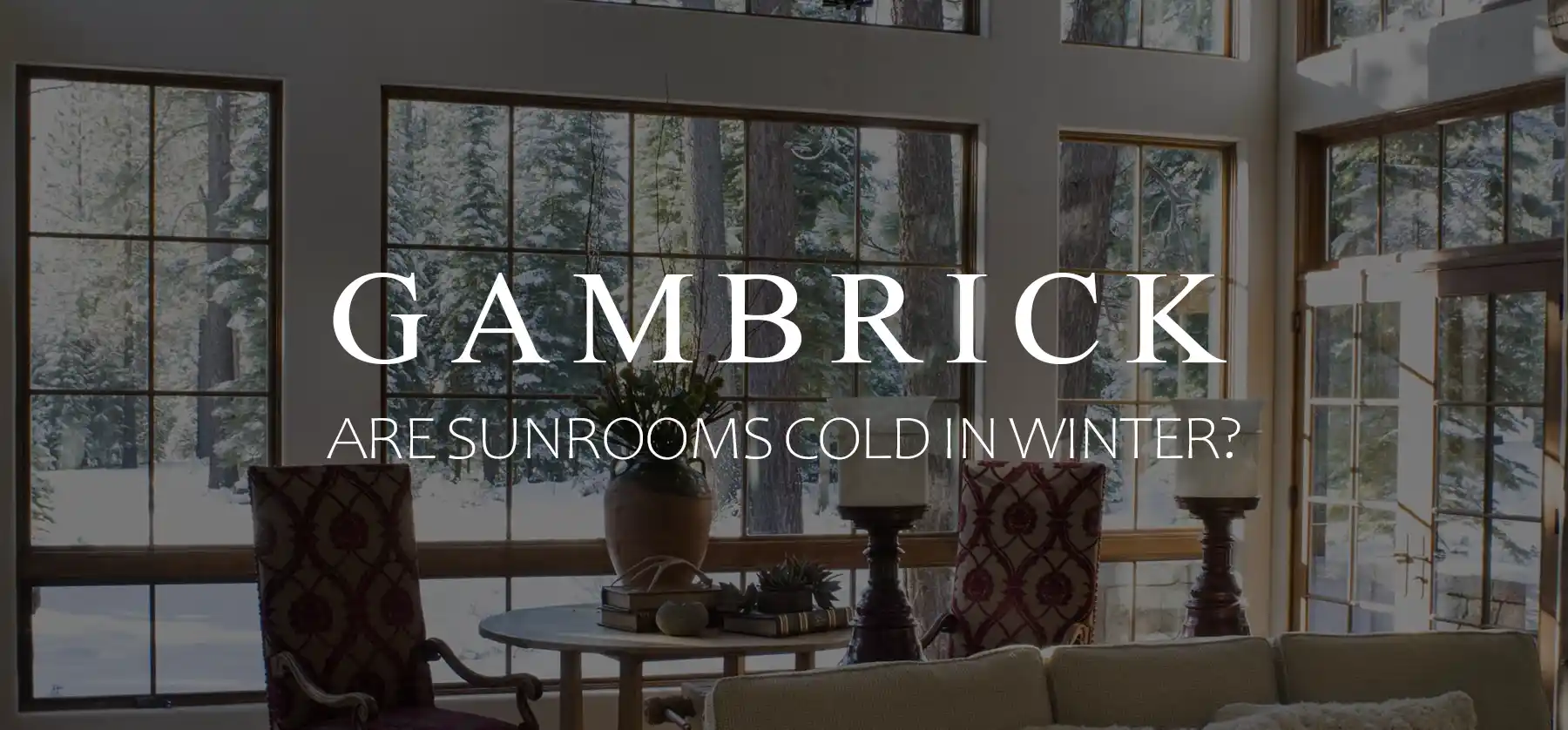
Are Sunrooms Cold In Winter?

By John Mazzuca | About | More Posts |
John Mazzuca is a custom home builder with over 25 years experience in the construction industry. John has designed, managed, and built hundreds of homes & construction projects.
Sunrooms are designed with lots of large windows to allow in natural light and provide a view of the outdoors. They can be cold in the winter if they’re not well insulated and heated due to their large expanses of glass. Glass isn’t as insulative as solid walls, which means that sunrooms can lose heat quickly when the temperature drops.
How cold a sunroom gets during winter largely depends on the type of glass used, the quality of the construction, how much insulation it has, and whether it’s heated or not.
Modern sunrooms can be equipped with insulated glass and thermal breaks to reduce heat loss. Some sunrooms are even designed to capture and retain solar heat during the day, which can help to keep the room warmer at night.
Without proper insulation and heating, a sunroom can be quite chilly and may not be comfortable for use in the colder months. These are called three-season rooms and are only designed for Summer, Fall, and Spring.
To enjoy a sunroom year-round, heating and insulation should be installed. This is called a four-season sunroom.
I’ve been a NJ sunroom contractor for over 25 years and can tell you firsthand that sunrooms can get extremely cold in Winter if they’re not insulated properly, especially at night. But in the day they can warm up quickly due to all the direct sunlight they get.
While sunrooms can be cold in winter, there are ways to make them more comfortable if you use the right glass, build it well, install heating, and insulate the room properly.
Tips For Keeping a Three-Season Sunroom Warm in Winter
Keeping a three-season sunroom warm during the winter is a challenge because it wasn’t designed for Winter use and probably isn’t well insulated. Without insulation, you can warm the room with a heater and/or the sun, but the heat will quickly dissipate once the heater is turned off or the sun goes down.
But there are still some things you can do to warm the room up and make it more comfortable.
- Insulation and Weatherproofing: The most important thing is to insulate and seal the room. This includes having double or triple-pane windows with low-emissivity (low-E) coatings that reflect heat into the room. Weatherstripping and caulking any gaps around windows and doors will also prevent cold drafts from entering. Insulating the floors and walls can further help retain heat, especially if the sunroom is built over a non-insulated space like a deck.
- Heating Solutions: Portable heaters are a great choice as they can be used only when the room is occupied. For a more permanent solution, extend the home’s HVAC system into the sunroom, use electric radiant floor heating, or install a mini-split heat pump.
- Maximizing Natural Light and Heat: Using thermal mass, like brick or concrete floors, can absorb heat during the day and release it slowly when the temperature drops. Heavy drapes or blinds at night can help retain the heat gained during the day.
- Supplemental Measures: Area rugs and carpets can add a layer of insulation to the floor, making it feel warmer underfoot. Using a ceiling fan set to run clockwise can push warm air that rises back down into the living space.
By implementing these strategies, a three-season sunroom can be made more comfortable during the winter, although it still won’t reach the same level of warmth as a fully insulated four-season room.
Can You Use a Three-Seasons Sunroom in Winter?
Yes, a three-season sunroom can be used in Winter, but it usually requires additional measures to make it more comfortable. Three-season sunrooms aren’t well insulated and don’t have heating because they’re only designed for use in Spring, Summer, and Fall. They can still get warm in the day due to all the natural light, but at night they can be freezing cold.
With the right modifications, such as adding portable heaters, improving insulation, and utilizing thermal curtains or blinds, the space can be made warmer.
The effectiveness of these measures will depend on the local climate and the existing structure of the sunroom. In milder winters, simply capitalizing on sunny days may be enough, but in harsher climates, more extensive modifications may be necessary for Winter use.
- I recommend sealing the sunroom as tightly as possible with caulk or weather stripping to reduce drafts as much as possible. Then bring in an energy efficient electric space heater to help warm the room.
- Use a thermal mass made of masonry that absorbs and radiates heat from the sun. Area rugs can make the floor feel warmer than a cold, hard surface.
- If your three-season room is built on a deck or porch, insulate the floor as much as possible.
- Use cloth furniture instead of leather or faux leather because it retains heat better.
- A 1500 watt electric heater can effectively heat a 250 sq. ft. sunroom and it only costs about .20 cents per hour.
Without insulation, a three-season room will never be as warm as a four-season sunroom in Winter. But you can make it a bit more comfortable by using a space heater and a few other measures to help retain more heat.
If you have any questions or comments email or leave a comment down below.

John Mazzuca | About | More Posts |
Custom Home Builder
John Mazzuca is a custom home designer and builder at Gambrick with over 25 years experience in the construction industry. John has designed, built and/or remodeled hundreds of homes, small buildings, and commercial projects. He writes about business, real estate, home building, and household electronics. His work has been featured in Fox Business, Better Homes & Garden, House Beautiful, and more.




















